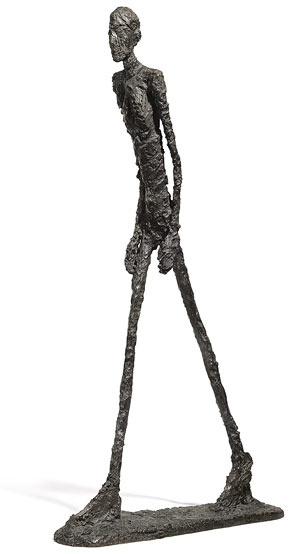Christie’s and Sotheby’s jockey for position in 2010
Feb 15th 2010
IN 2009 Christie’s year on year sales fell by a third, but it was definitely Christie’s year. The private auction house, owned by François Pinault, a French luxury-goods billionaire, sold four of the year’s five most-expensive works and seven of the top ten. Of the pieces that fetched more than $10m in 2009, 61% had been sold by Christie’s. Its year was bookended by two high points: the hugely successful Yves Saint Laurent sale in Paris in February—the biggest single-owner auction ever—and an electrifying Old Master sale in early December, when two bidders fought over a small pencil drawing by Raphael, taking the artist to a new record of £29.2m ($47.9m), the second-highest price ever paid at auction for an Old Master.
Sotheby’s
Harold Wilson once said that a week was a long time in politics. He might as well have been talking about the art market, for in the past few weeks the auction house’s fortunes appear to have been completely reversed.
Confidence is finally returning to the saleroom, after the fallout from the financial crisis. But the success of an auction depends entirely on securing the best works to sell. This is even more important than identifying enough rich buyers prepared to pay top prices for expensive works of art. “If you get in the art,” one New York dealer said last week, “the buyers will follow.”
Even before Christie’s success with the Raphael, Sotheby’s had been creeping up on its rival. Since then it has been steaming ahead.
Private collectors were prominent among the winning bidders in its main sale during Old Masters’ week in New York on January 28th, which brought in $61.6m (including commission and taxes), almost touching the high estimate of $63m. Anthony van Dyck’s oil of two studies of a bearded man sold for $7.2m. In the face of ambitious and potentially daunting estimates, a European collector paid a record $6.8m for Hendrick Goltzius’s “Jupiter and Antiope”, while another paid $4.2m, another record, for Francisco de Zurbarán’s lovely “Saint Dorothy”, the cover lot.
But that was tame stuff compared with the Impressionist and Modern sale that followed in London on February 3rd. Sotheby’s found ten collectors who were prepared to bid above the top estimate of £18m for Alberto Giacometti’s “l’Homme Qui Marche I” (pictured), which had been consigned by Commerzbank following its takeover by Dresdner Bank a year ago. The frenzy was surprising considering this is one of six casts made of the sculpture while Giacometti was still alive, and it is accompanied by a further four artists’ proofs. Three of the casts are in public collections, which suggests that two others are held privately and may yet come on the market, making Sotheby’s sculpted man almost one of a crowd.
Philip Hook, Sotheby’s London-based senior director in charge of Impressionist and Modern sales in Europe, secured the sculpture for a private collector in the face of spirited bidding from his boss, Bill Ruprecht, who had flown from New York specially to take telephone bids in the auction. The final price, with commission and taxes, was a world record £65m, more than Sotheby’s raised for the four most expensive works it sold last year.
The same sale saw Gustav Klimt’s leafy Italian church, “Kirche in Cassone”, reach £26.9m, compared with a pre-sale estimate of £12m-18m, a record for a Klimt landscape.
But no sooner had Henry Wyndham, the theatrical auctioneer and chairman of Sotheby’s Europe, laid down his hammer than Sotheby’s was off thinking about the next big sale in New York in May. Here too it appears that the Bond Street house may have gained the upper hand over its rival. The heirs of an elderly American collector, Frances Lasker Brody, who died last November aged 93, are shortly to reveal who is to sell the magnificent collection of modernist paintings they inherited, Sotheby’s or Christie’s. Neither auction house would comment, but an announcement is expected within the next fortnight.
The Brody sale is said to be valued at $100m-150m. The star works include an important Picasso of a reclining woman, dating from 1932, and another Giacometti sculpture, “Tête de Diego”. The Brodys were Los Angeles gentry, philanthropists, collectors and founding benefactors of the Los Angeles County Museum of Art. A. Quincy Jones built them a modernist masterpiece in Holmby Hills, above the city, with a courtyard decorated with a ceramic-tile mural made specially by Matisse. The sale would include 20-30 additional works and have its own catalogue. Nice work, if you can get it.
And work it is. As Christie’s 2009 figures reveal, auction houses are struggling to move merchandise. Sales revenues at its King Street headquarters were down 57% last year when compared with 2008. Sales in Dubai, which had promised such a bright new future, were down 62%. Sales of British and Irish art were down 55%, prints were down 56%, and post-war and contemporary art—a huge part of Christie’s business in recent years—was down 65%. And this in a year that has been considered successful for Christie’s. Sotheby’s figures, due out on March 1st, will be smaller. No wonder they are fighting so hard for new business.
